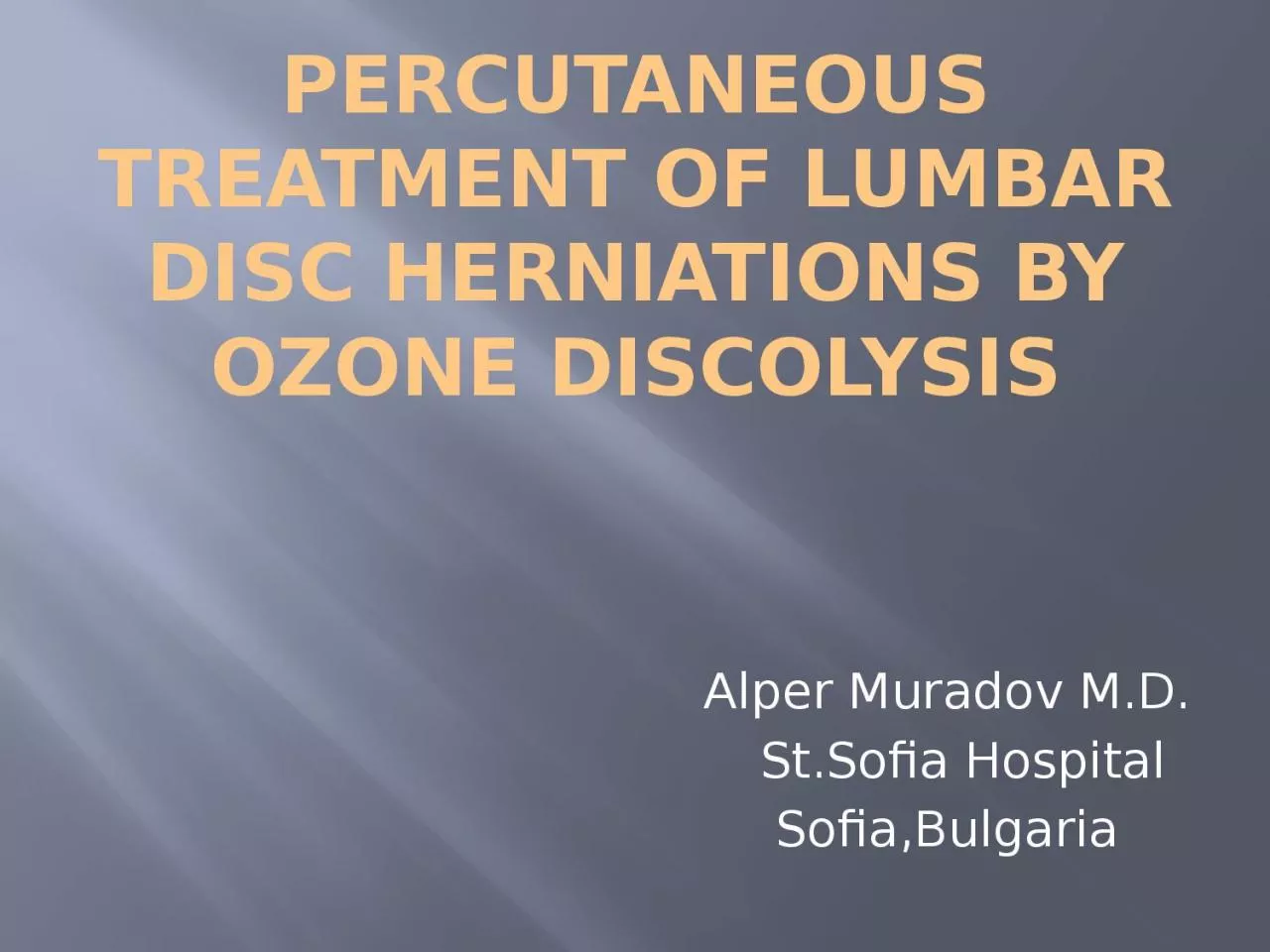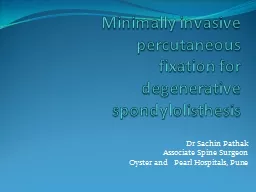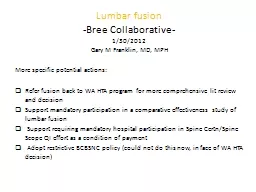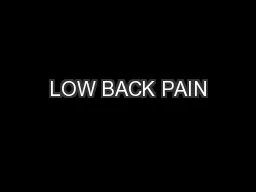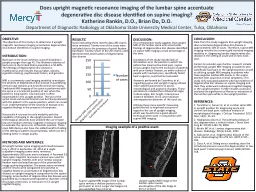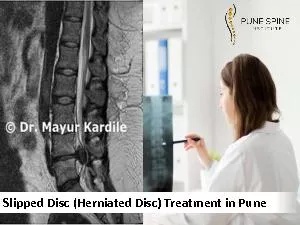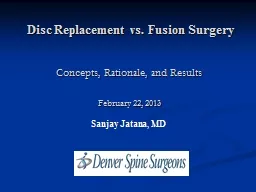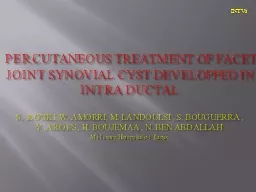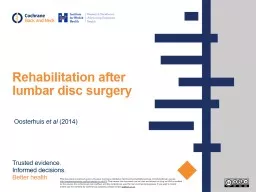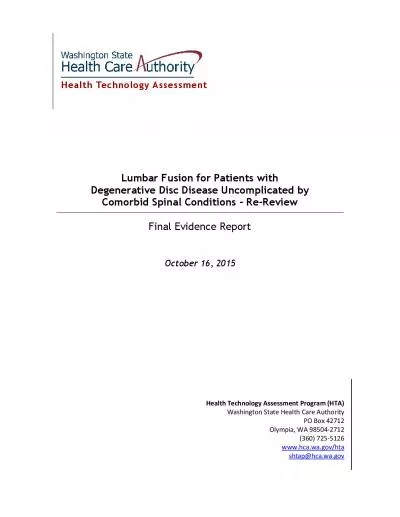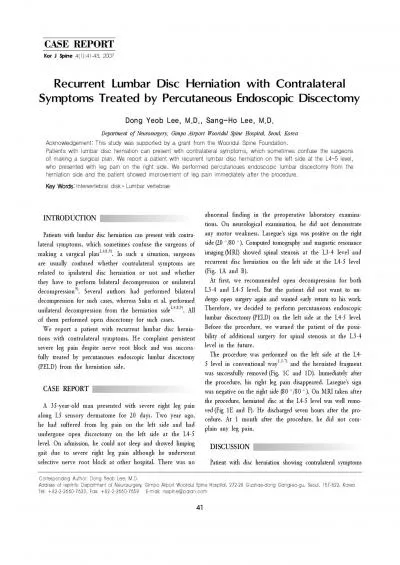PPT-Percutaneous Treatment of LUMBAR disc
Author : reese | Published Date : 2022-06-28
herniations by ozone DISCOLYSIS Alper Muradov MD StSofia Hospital SofiaBulgaria Epidemiology Low back pain is the commonest condition affecting the lumbar spine
Presentation Embed Code
Download Presentation
Download Presentation The PPT/PDF document "Percutaneous Treatment of LUMBAR disc" is the property of its rightful owner. Permission is granted to download and print the materials on this website for personal, non-commercial use only, and to display it on your personal computer provided you do not modify the materials and that you retain all copyright notices contained in the materials. By downloading content from our website, you accept the terms of this agreement.
Percutaneous Treatment of LUMBAR disc: Transcript
herniations by ozone DISCOLYSIS Alper Muradov MD StSofia Hospital SofiaBulgaria Epidemiology Low back pain is the commonest condition affecting the lumbar spine and is the most frequent cause of absence from work Around 80 of the population in western countries will experience at least one episode of low back pain in their lifetime and 55 suffer from low back pain associated with . percutaneous. fixation for degenerative spondylolisthesis. Dr . Sachin. . Pathak. Associate . Spine Surgeon. Oyster and Pearl Hospitals, Pune. Gr. 1 lumbar . spondylolisthesis. Traetment. plan . percutaneous. fixation for degenerative spondylolisthesis. Dr . Sachin. . Pathak. Associate . Spine Surgeon. Oyster and Pearl Hospitals, Pune. Gr. 1 lumbar . spondylolisthesis. Traetment. plan . -. Bree. Collaborative-. 1/30/2012. Gary M Franklin, MD, MPH. More specific potential actions: . Refer fusion back to WA HTA program for more comprehensive lit review and decision. Support mandatory participation in a comparative effectiveness study of lumbar fusion. Decompression: . An . Innovative Treatment for LSS. Sayed . Emal. . Wahezi. , MD. Program Director, Pain Fellowship. Department of Rehabilitation Medicine. Department of Anesthesia. Montefiore Medical Center. Dr. Zachary . Stelmack. ANATOMY OF THE LUMBAR SPINE/PELVIS. 5 lumbar vertebrae (bones of that make up your spine). L1, L2, L3, L4, L5. 1 Sacrum (not part of the lumbar spine exactly, but goes right along with it). Katherine Rankin, D.O., Brian Do, D.O.. Department of Diagnostic Radiology at Oklahoma State University Medical Center, Tulsa, Oklahoma. OBJECTIVE:. The objective of this study is to determine. if upright magnetic resonance imaging accentuates degenerative disc disease identified on supine imaging.. At Pune Spine Institute, 80 or 90% of patients suffering from slipped disc feel better with non operative herniated disc treatment and symptoms almost disappear. Typically the healing process takes 6-9 weeks, however depending on the situation, it may take longer. Non surgical treatment includes medication, physiotherapy, Epidural injections / nerve root blocks.
We also provide surgical treatment for such cases. Our preferred surgical technique is Microdiscectomy (Microscopic removal of herniated disc fragment) which is a minimally invasive surgery and gives rapid relief from pain. Depending on the nature of work, Patients can return to work within 2 to 3 weeks of surgery. Sanjay Jatana, MD. Concepts, Rationale, and Results. February 22, 2013. Disclosures. Conflict of Interest: None. Paid Consultant: Zimmer. FDA IDE Study site : PCM disc replacement. Hospital Agreement: Rose Spine Institute. S. KOUKI ,W. AMORRI, M. LANDOULSI , S. BOUGUERRA , Y.AROUS , H. BOUJEMAA , N. BEN ABDALLAH. Military. . Hospital. of Tunis. INTV3. objective:. To study the results of facet joint intraarticular steroid injections in a patient with symptomatic lumbar facet joint synovial cysts developped in intra ductal.. This document is licensed under a Creative Commons Attribution . NonCommercialNoDerivatives. 4.0 International License: . http://creativecommons.org/licenses/by-nc-nd/4.0/. That means this document can be used and shared as long as IWH is credited as the source, the contents are not modified, and the contents are used for non-commercial purposes. If you wish to modify and/or use the contents for commercial purposes, please contact . This synopsis has been completed by medical practitioners. It is based on a literature search at the standard of a textbook of medicine and generalist review articles. It is not intended to be a meta- Mukund et al.
Journal of Clinical Interventional Radiology ISVIR
ol. 2
o. 1/2018
Percutaneous Transhepatic Biliary Interventions
Mukund et al.
Journal of Clinical Interventional Radiology ISVIR
ol. 2 Degenerative Disc Disease Uncomplicated by
Comorbid Spinal Conditions
-
Re
-
Review
Final
Evidence
Report
October 16
, 2015
20, 2012
Health Technology Assessment Program (HTA)
W Recurrent Disc Herniation with Contralateral Symptoms
DY Lee, et al.
1.Ahn Y, Lee SH, Park WM, Lee HY, Shin SW, Kang HY: Posterolateral percutaneous endoscopic lumbar discectomy for recurrent disc h
Download Document
Here is the link to download the presentation.
"Percutaneous Treatment of LUMBAR disc"The content belongs to its owner. You may download and print it for personal use, without modification, and keep all copyright notices. By downloading, you agree to these terms.
Related Documents

